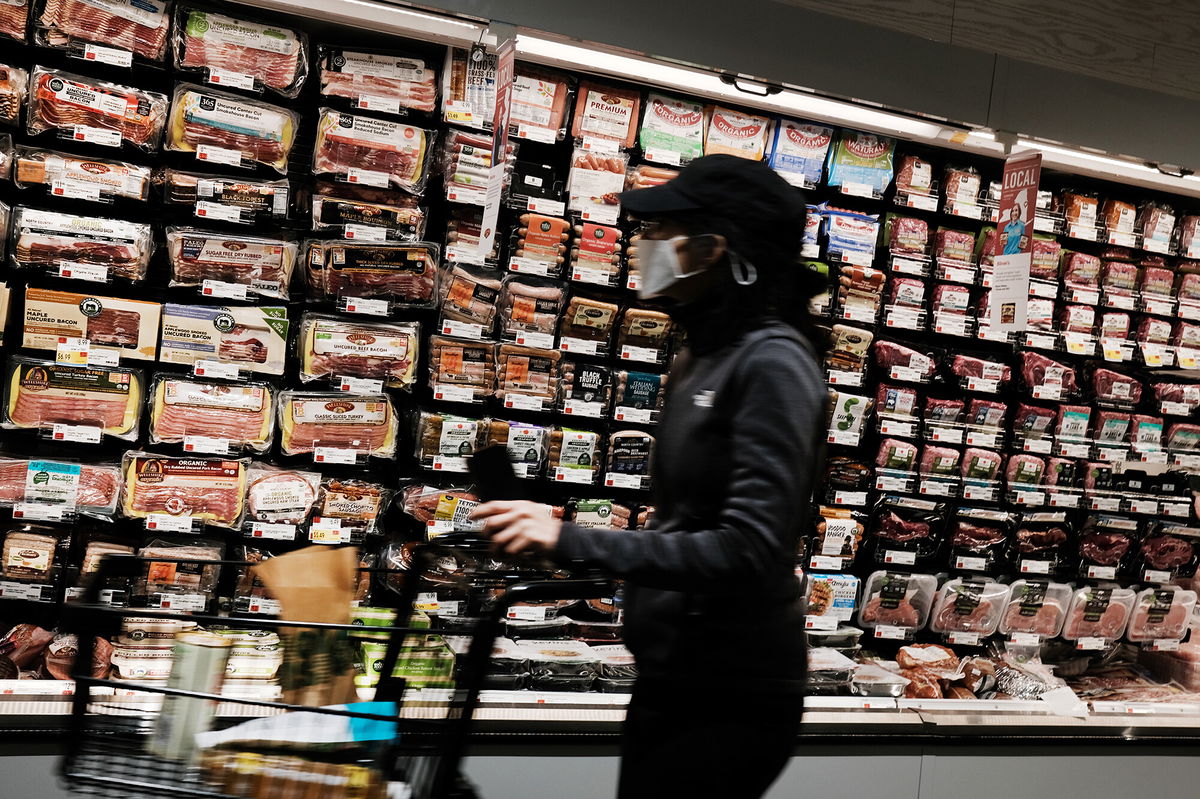Consumers are growing more optimistic about the US economy

Consumer confidence rose for a second straight month in September
Martha C. White for CNN Business
Consumer confidence rose for a second straight month in September, as moderating gas prices and the hope that inflationary pressures might be easing helped lift the nation’s collective mood.
The Conference Board reported on Tuesday that its baseline index rose to 108 from a revised 103.6 in August, the highest it has been since April.
The monthly survey found that Americans are feeling less pessimistic in both their assessment of current conditions and their outlook for the future. The Present Situation Index portion of the survey rose from 145.3 to 149.6. The Expectations Index, which is based on the short-term economic outlook, rose from 75.8 to 80.3.
The reading comes as welcome news, since the consumer outlook lately has been buffeted by the growing fear of an economic downturn. Last Thursday, the Conference Board said its Leading Economic Index notched its sixth consecutive drop, which the organization’s senior director of economics said is “potentially signaling a recession.” The index provides visibility into a range of economic activity, ranging from jobs to manufacturing to markets.
The consumer confidence index is just one constellation of data points economists and investors will have to digest this week. The Bureau of Economic Analysis’s third and final look at second-quarter GDP will be released on Thursday. Barring an upward revision that finds the economy expanded instead of contracted, American economic activity will have fallen for two consecutive quarters, a commonly used — although unofficial — yardstick to indicate that the country is in a recession.
On Friday, the BEA will also release its Personal Consumption Expenditures Index, the Federal Reserve’s preferred inflation benchmark, and the University of Michigan will report on consumer sentiment.
“Looking ahead, the improvement in confidence may bode well for consumer spending in the final months of 2022, but inflation and interest rate hikes remain strong headwinds to growth in the short term,” Lynn Franco, senior director of economic indicators at The Conference Board, said in a statement.
Attitudes buoyed by lower gas, plentiful jobs
Analysts said much of September’s improvement could be attributable to lower gas prices and continued high demand for workers. “We’ve seen declining gasoline prices for some time… and we’ve had a pretty robust labor market,” said Charlie Ripley, senior investment strategist at Allianz Investment Management.
“We’ve been surprised with just how correlated consumer confidence has been with energy costs and fuel costs,” said Keith Buchanan, portfolio manager at Globalt Investments. “It makes people feel better when the weekly stop at the gas pump costs 30% less than it did three months ago.”
Although the average national price of a gallon of gas recently reversed course, breaking a 99-day streak of falling prices, it remains well below June’s record high of $5.02.
The Conference Board found that a greater percentage of people surveyed in September than in August said jobs were “plentiful,” while a slightly smaller proportion characterized jobs as “hard to get.” The survey found that home purchasing intentions were down, while purchase intentions for cars and appliances rose.
“It looks like consumers are not too worried,” said Melissa Brown, global head of applied research at Qontigo. “It does suggest an economy that can continue to grow, but I think that specter of inflation is out there and is kind of overhanging other good news.”
Inflation expectations remain elevated
The Conference Board found that average inflation expectations 12 months out fell to 6.8% in September from 7% in August. “Concerns about inflation dissipated further in September… and are now at their lowest level since the start of the year,” Franco said.
However, even with this improvement, it still suggests that Americans expect inflation to remain higher for longer. In the Federal Reserve’s Summary of Economic Projections released last week, officials’ expectations for headline PCE inflation in 2023 fell to a range of between 2.4% and 4.1%. That’s down from the current reading of 6.3%.
“We’re seeing the realization that interest rates will have to be held higher for longer,” Brian Mulberry, client portfolio manager at Zacks Investment Management. “You’re seeing that reflected in the price volatility in the market right now… People are really trying to get a handle on what reality is.”
“There are a lot of questions of, what does this inflationary environment do to consumer behavior?” Buchanan said.
He added that the Fed’s hope for a soft landing rests on how American households respond to the effects of tighter monetary policy, and how well they can manage elevated prices and higher borrowing costs.
“How hard that landing will be will depend very, very heavily on how sticky and resilient consumer spending and behavior becomes over the next 12 months,” he said.
The-CNN-Wire
™ & © 2022 Cable News Network, Inc., a Warner Bros. Discovery Company. All rights reserved.

